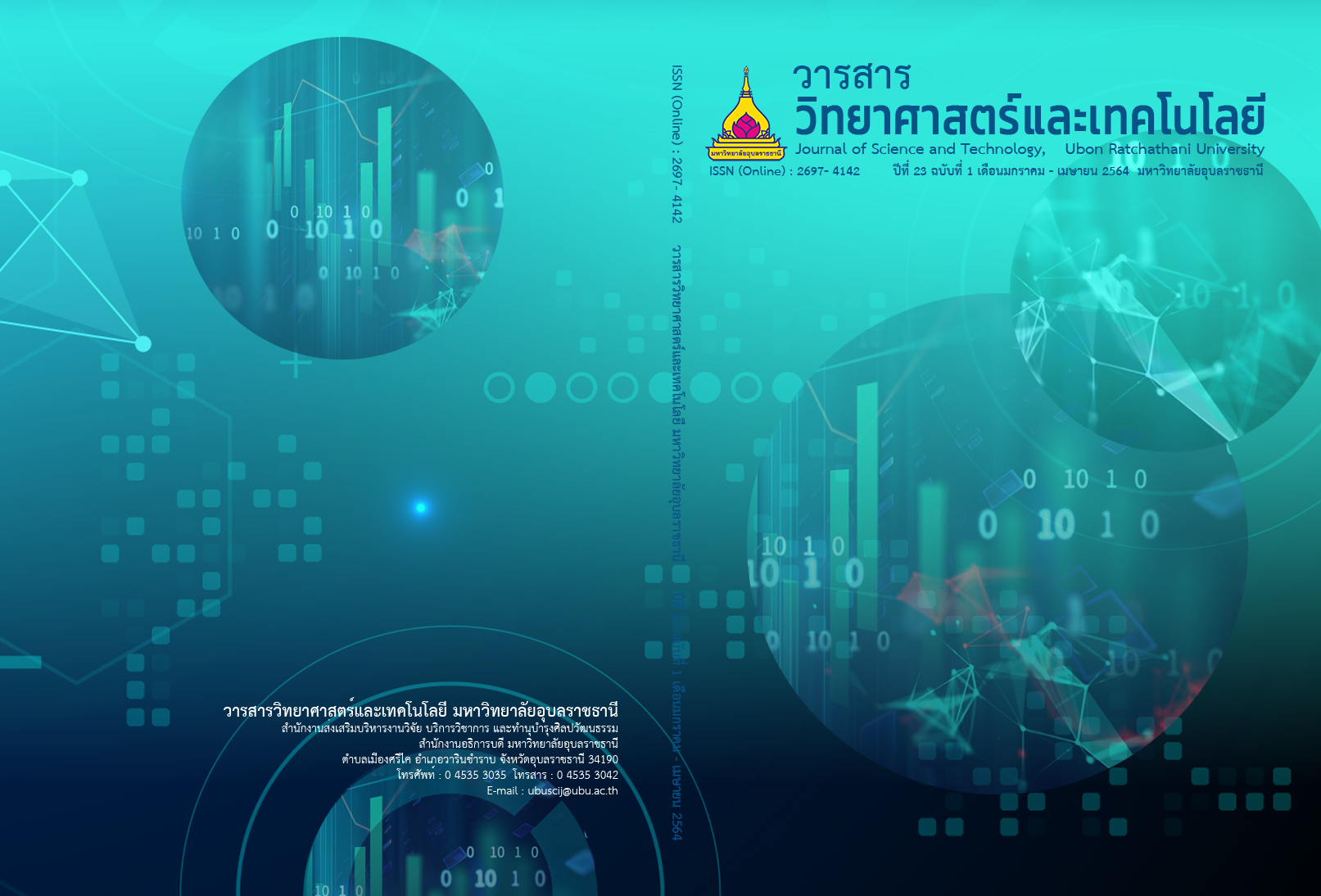การเปรียบเทียบประสิทธิภาพเทคนิคเหมืองข้อมูลในการสร้างแบบจำลองเพื่อจำแนกความคิดเห็น ของผู้ปกครองต่อการใช้สมาร์ทโฟนของบุตร
Main Article Content
บทคัดย่อ
งานวิจัยฉบับนี้มีวัตถุประสงค์เพื่อเปรียบเทียบประสิทธิภาพของเทคนิคในเหมืองข้อมูลในการสร้างแบบจำลองจำแนกความคิดเห็นของผู้ปกครองต่อการใช้สมาร์ทโฟนของบุตร งานวิจัยนี้ใช้ 6 เทคนิค ได้แก่ เทคนิคริปเปอร์ เทคนิคต้นไม้ตัดสินใจแบบ ซี4.5 เทคนิคนาอีฟเบย์ เทคนิคซัพพอร์ตเวคเตอร์แมชชีน เทคนิคเคเนียร์เรสเนเบอร์ และเทคนิคต้นไม้ป่าสุ่ม มาสร้างแบบจำลองความคิดเห็นของผู้ปกครองต่อการใช้สมาร์ทโฟนของบุตร โดยข้อมูลนั้นถูกรวบรวมมาเฉพาะความคิดเห็นของผู้ปกครองที่มีลักษณะเป็นข้อความภาษาไทยบนเครือข่ายสังคมออนไลน์ผ่านเว็บไชต์พันทิป และเฟซบุ๊ค จำนวนทั้งหมด 1, 925 ข้อความ ตัวแปรที่ใช้ในงานวิจัยนี้ผู้วิจัยได้เลือกเฉพาะคำวิเศษณ์ที่สามารถระบุความรู้สึกได้เป็นอย่างดี 10-โฟลด์ครอสวาลิเดชั่น ได้ถูกนำมาใช้ในการแบ่งกลุ่มข้อมูลชุดเรียนรู้และชุดทดสอบ รวมถึงวัดประสิทธิภาพของแบบจำลองด้วยโดยใช้ค่าความแม่นยำ ค่าความระลึก และค่าความถ่วงดุล หลังจากทำการทดลองและวัดประสิทธิภาพของแบบจำลอง พบว่า เทคนิคป่าสุ่ม เป็นเทคนิคที่ดีที่สุดในการวิเคราะห์ความคิดเห็นสำหรับข้อมูลชุดนี้ โดยให้ค่าความแม่นยำ 89.62% ค่าความระลึก 78.38% และค่าความถ่วงดุล 83.55%
Article Details
บทความที่ได้รับการตีพิมพ์เป็นลิขสิทธิ์ของ วารสารวิทยาศาสตร์และเทคโนโลยี มหาวิทยาลัยอุบลราชธานี
ข้อความที่ปรากฏในบทความแต่ละเรื่องในวารสารวิชาการเล่มนี้เป็นความคิดเห็นส่วนตัวของผู้เขียนแต่ละท่านไม่เกี่ยวข้องกับมหาวิทยาลัยอุบลราชธานี และคณาจารย์ท่านอื่นๆในมหาวิทยาลัยฯ แต่อย่างใด ความรับผิดชอบองค์ประกอบทั้งหมดของบทความแต่ละเรื่องเป็นของผู้เขียนแต่ละท่าน หากมีความผิดพลาดใดๆ ผู้เขียนแต่ละท่านจะรับผิดชอบบทความของตนเองแต่ผู้เดียว
เอกสารอ้างอิง
[2] Apirapee, S. T., Srirath, P. and Yanawuti, S. 2018. "Screen Behaviour of Thai Toddlers Aged 0 – 3 years in Bangkok," The journal of social communication innovation, vol. 6, no. 2, pp. 60-69 (in Thai)
[3] Siritorn, Y. 2013. "Gaming Addiction in Children: Screening and Solutions," Journal of Nursing and Education, vol. 6, no. 3, pp. 16-24 (in Thai)
[4] J. Sopana, C. and et al. 2018. "A DANGER OF MOBILE TECHNOLOGY," Research Journal Phranakhon Rajabhat: Science and Technology, vol. 13, no.1, pp. 164-177 (in Thai)
[5] Chat, C. and et al. 2019."The Learning Outcome of English Subject by Lesson One for Kids Application using Augmented Reality Technology," Journal of Liberal Arts, Maejo University, vol. 7, no. 2, pp. 81-95 (in Thai)
[6] Khan,F. H., Bashir,S. and U. Qamar. 2014. "TOM: Twitter opinion mining framework using hybrid classification scheme," Decision support systems, vol. 57, pp. 245-257.
[7] Noochanat, P. and Jaree, T. 2018. "Classifying Thai opinions on online media using text mining," Journal of Science & Technology MSU, vol. 37, no. 3, p. (in Thai)
[8] Gupta, S. and et al. 2018. "Opinion Mining for Hotel Rating through Reviews Using Decision Tree Classification Method," International Journal of Advanced Research in Computer Science, vol. 9, no. 2, p. 180
[9] Kanda, P. and L. Pramote. 2013. "OPINION MINING FROM ONLINE SOCIAL NETWORKS," Modern Management Journal, vol. 11, no. 2, pp. 11-20 (in Thai)
[10] Phadung, N. and Jaree, T. 2019. "Intrusion Detection Using Classification Techniques in Data Mining," Journal of Information Technology Management and Innovation, vol. 6, no. 2, pp. 111-118 (in Thai)
[11] Watchareewan, J. and Sunantha, S. 2017."TEXT CLASSIFICATION ANALYSIS BY STABILITY COMPARISON OF ALGORITHMS," Sripatum Review of Science and Technology, vol. 9, no. 1, pp. 19-31 (in Thai)


